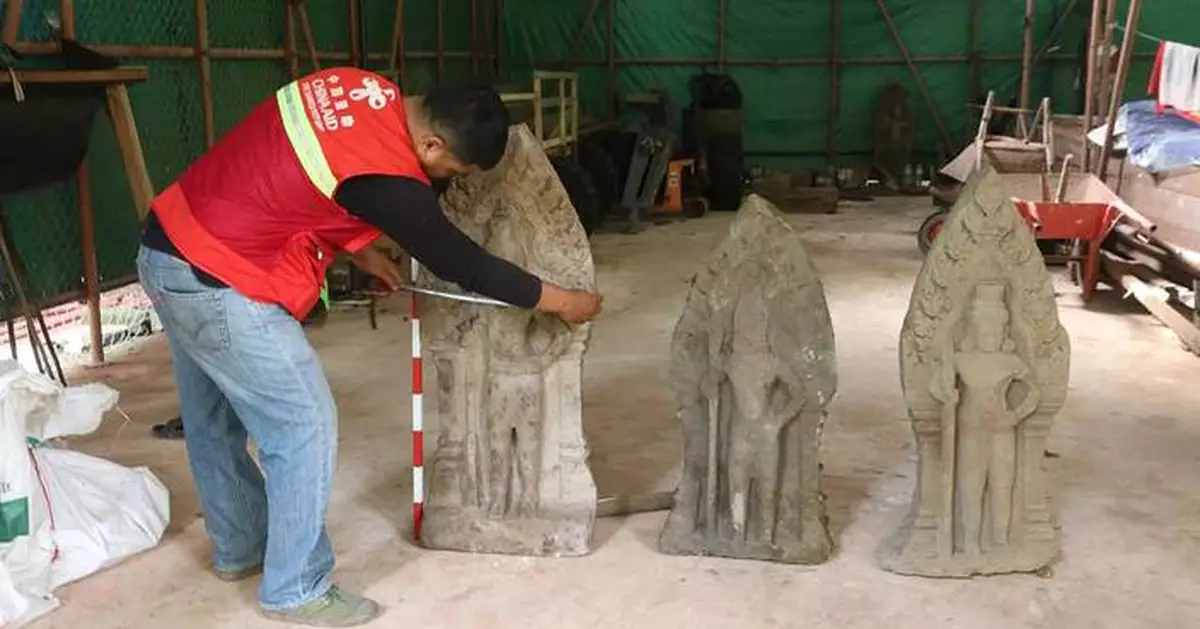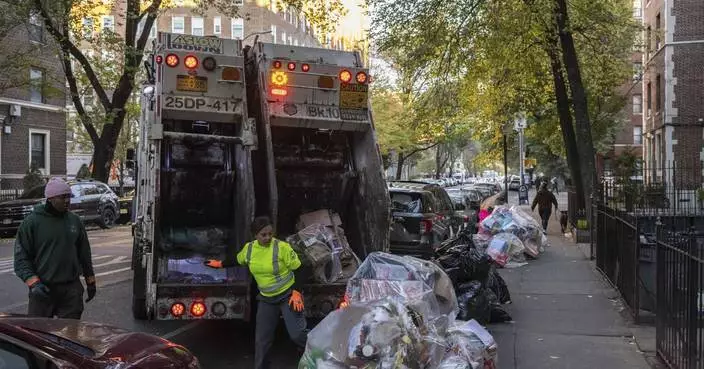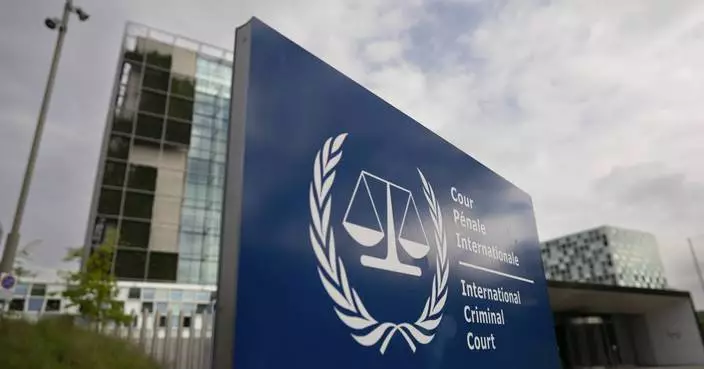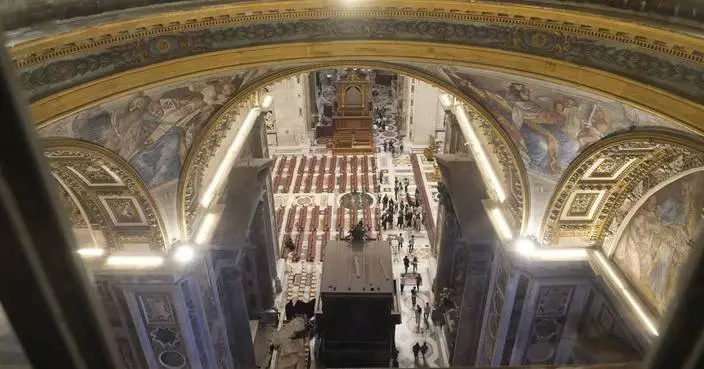PHNOM PENH, Cambodia (AP) — Archaeologists in Cambodia have unearthed a dozen centuries-old sandstone statues in a “remarkable discovery” at the Angkor World Heritage Site near the city of Siem Reap, authorities said Wednesday.
The statues — depicting so-called “door guardians” — were discovered last week near the north gate leading to the 11th-century Royal Palace at Angkor Thom, the last capital of the Khmer Empire, said Long Kosal, spokesman for the Apsara National Authority, the government agency that oversees the archaeological park.
Teams were assessing the ancient gate's structure and searching for fallen stones around the portal on the north side of Angkor Thom, one of four entrances to the complex, when the discovery was made.
The statues depict guardians standing at attention and vary in size from about 1 meter to 110 centimeters, or about 39 to 43 inches. They were found buried at depths of up to 1.4 meters (4.5 feet) and some are in surprisingly good shape, with each featuring unique facial hair ornaments, adding to their distinctiveness, archaeologist Sorn Chanthorn said.
“Experts believe these door guardian statues exemplify the Khneang Style, aligning with the construction period of the 11th-century palace.” the Apsara National Authority said.
Angkor Thom is part of the Angkor Archaeological Park, a complex that sprawls over some 400 square kilometers (155 square miles), named a UNESCO World Heritage Site in 1992 and one of Southeast Asia's most popular tourist destinations.
It contains the ruins of Khmer Empire capitals from the 9th to 15th centuries, including the temple of Angkor Wat.
The site, near Siem Reap, about 200 miles (320 kilometers) northwest of the capital, Phnom Penh, drew more than 500,000 international visitors in the first half of 2024, according to Cambodia’s Tourism Ministry.
The archaeological dig was a collaborative project between Apsara and the China-Cambodia Government Team for Safeguarding Angkor, Apsara said.
Following the discovery of the statues, the archaeological team carefully documented their positions before removing them for cleaning and restoration. They will eventually be returned to their original locations, authorities said.
Many Khmer cultural treasures were looted during the long period of civil war and instability when Cambodia was ruled by the brutal communist Khmer Rouge regime in the 1970s.
Cambodia has benefited from a trend that in recent decades has seen the repatriation of art and archaeological treasures taken from their homelands. In August, it celebrated the return of dozens of artifacts from museums and private collections abroad.
It has also come under criticism for efforts to clean up the Angkor site, which has involved relocating thousands of families in what Amnesty International has condemned as a “gross violation of international human rights law.”
At its meeting in July, the U.N.'s World Heritage Committee recommended that Cambodia invite a new team of experts to monitor the situation.
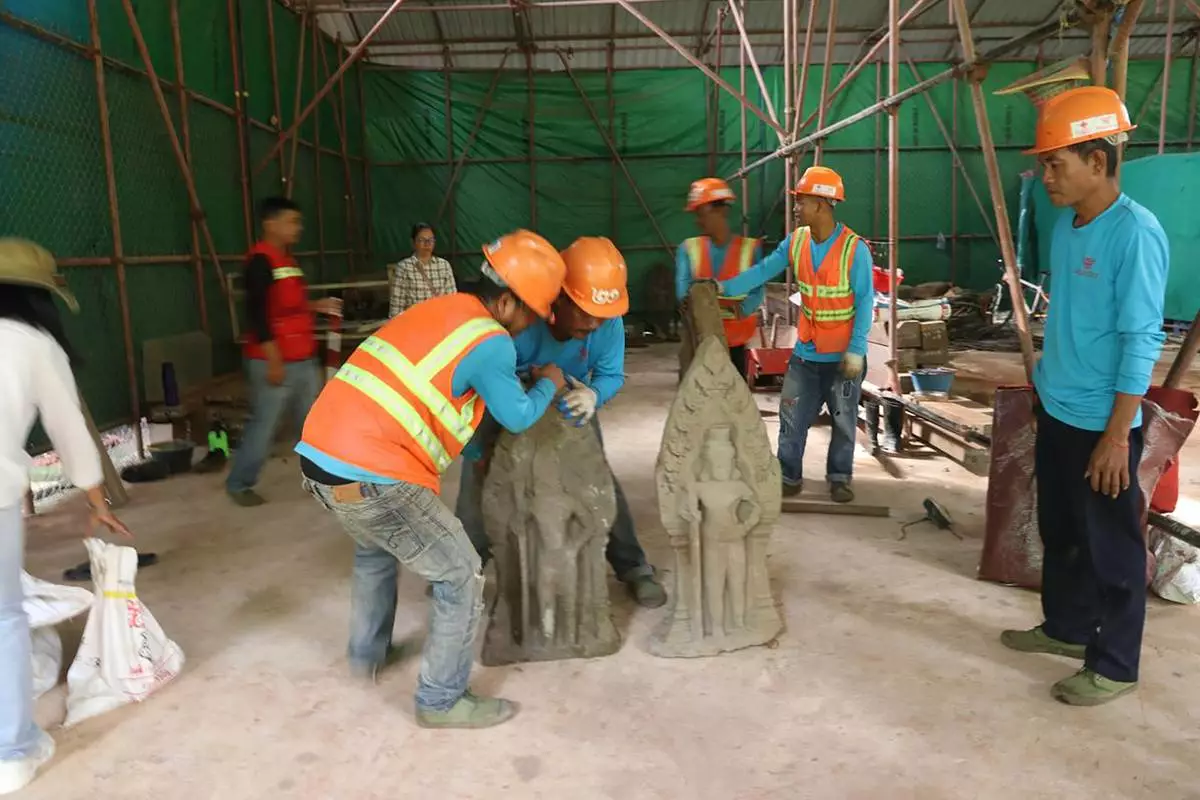
This handout photo provided by Apsaras National Authority shows centuries-old sandstone statues being arranged at Angkor Thom in Cambodia, Oct. 24, 2024. (Phouk Chea/Apsaras National Authority via AP)

This handout photo provided by Apsaras National Authority shows archaeologists working at unearthing a centuries-old sandstone statue at Angkor Thom in Cambodia, Oct. 24, 2024. (Phouk Chea/Apsaras National Authority via AP)

This handout photo provided by Apsaras National Authority shows a centuries-old sandstone statue being measured at Angkor Thom in Cambodia, Oct. 24, 2024. (Phouk Chea/Apsaras National Authority via AP)
SEOUL, South Korea (AP) — The biggest November snowstorm to hit South Korea’s capital in more than a half century blanketed the capital on Wednesday, grounding hundreds of flights, disrupting commuter traffic and leaving at least two dead.
South Korea’s weather agency said 20 to 26 centimeters (7.8 to 10 inches) of snow fell in northern areas of Seoul and nearby areas. The agency said it was the heaviest snowstorm Seoul has experienced in November in 52 years. A storm on Nov. 28, 1972, dumped 12 centimeters (4.7 inches).
South Korea’s Yonhap news agency said one person died and four others were injured in a five-vehicle accident in the eastern town of Hongcheon.
In the town of Yangju, a tent-type garage collapsed and killed a person who was removing snow, according to South Korea’s Ministry of the Interior and Safety. The snow caused temporary power outages at about 230 homes in the city of Gwangju, near Seoul, according to the Gyeonggi provincial government.
The storm blanketed much of the country, with the central, eastern and southwestern regions recording about 10 to 28 centimeters (3.9 to 11 inches) of cover.
At least 317 flights were canceled or delayed at airports nationwide, while authorities ordered around 90 ferries to remain at port. They also shut down hundreds of hiking trails.
Icy road conditions slowed down the morning commute in Seoul and led to massive crowds at subways, causing delays. Emergency workers across the country responded to fallen trees, road signs and other safety risks.
Officials at the Safety Ministry said they couldn't confirm any school closures as of Wednesday afternoon.
Visitors dressed in traditional hanbok garb were busy taking photographs at Seoul’s snow-covered medieval palaces while snowmen popped up in playgrounds and schoolyards across the country.
The weather agency said snow will continue in most parts of the country until noon Thursday.
Associated Press writer Hyung-jin Kim in Seoul, South Korea, contributed to this report.
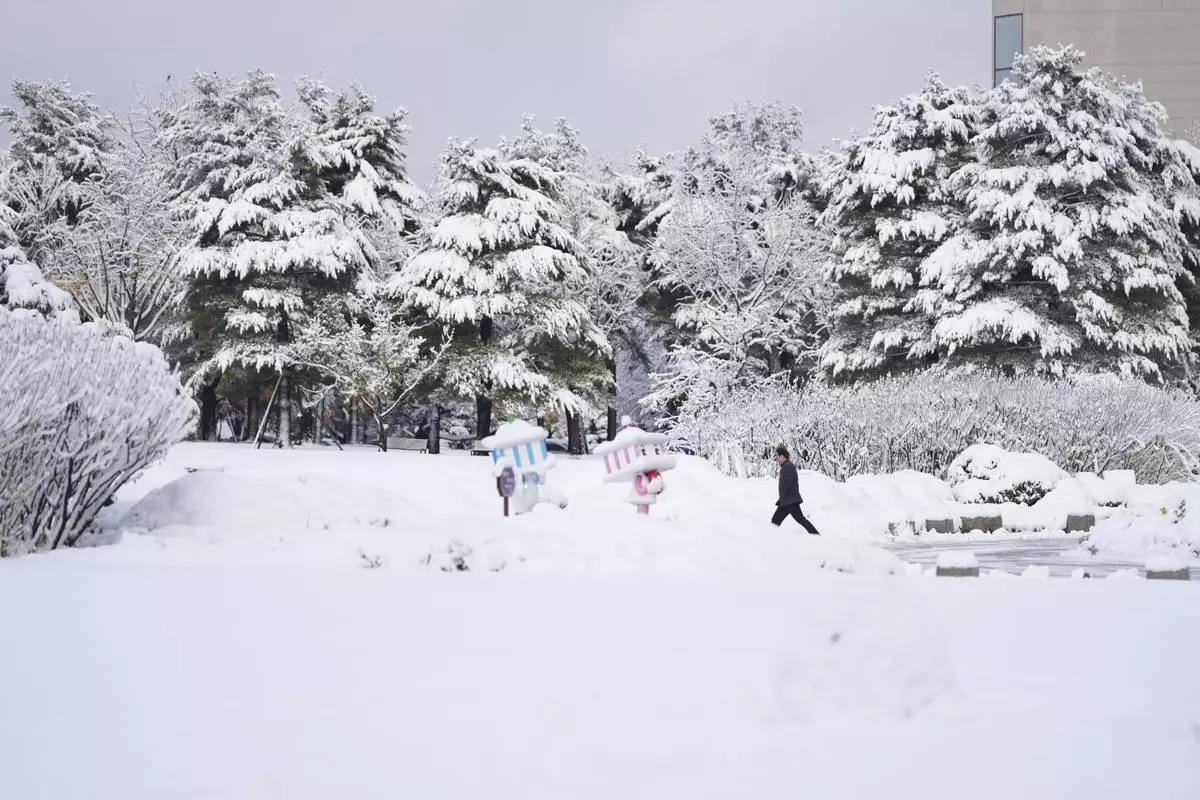
A man walks past at the National Assembly in Seoul, South Korea, Wednesday, Nov. 27, 2024. (AP Photo/Lee Jin-man)

A visitor holds her smartphone outside of the snow-covered National Palace Museum in Seoul, South Korea, Wednesday, Nov. 27, 2024. (AP Photo/Lee Jin-man)
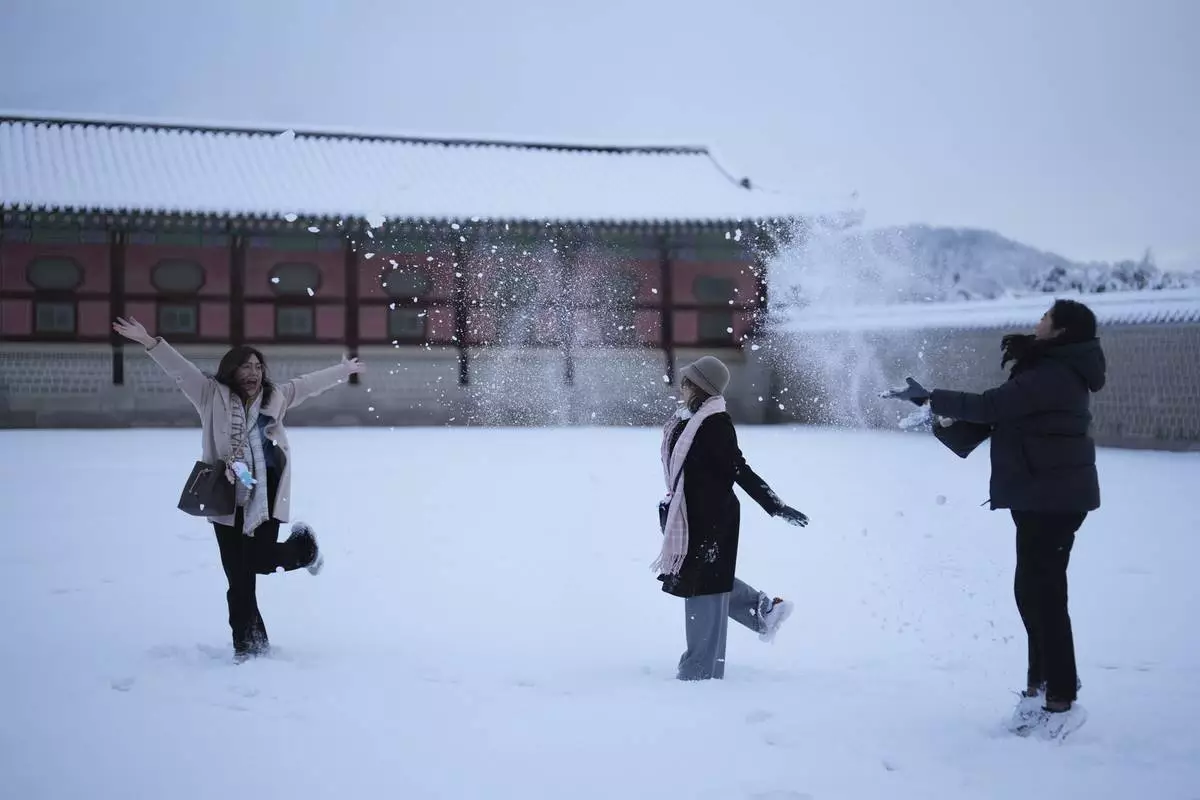
Visitors Cha, left, and Chie, center, from the Philippines, play with snow as they take selfies at the Gyeongbok Palace, one of South Korea's well-known landmarks, in Seoul, South Korea, Wednesday, Nov. 27, 2024. (AP Photo/Lee Jin-man)
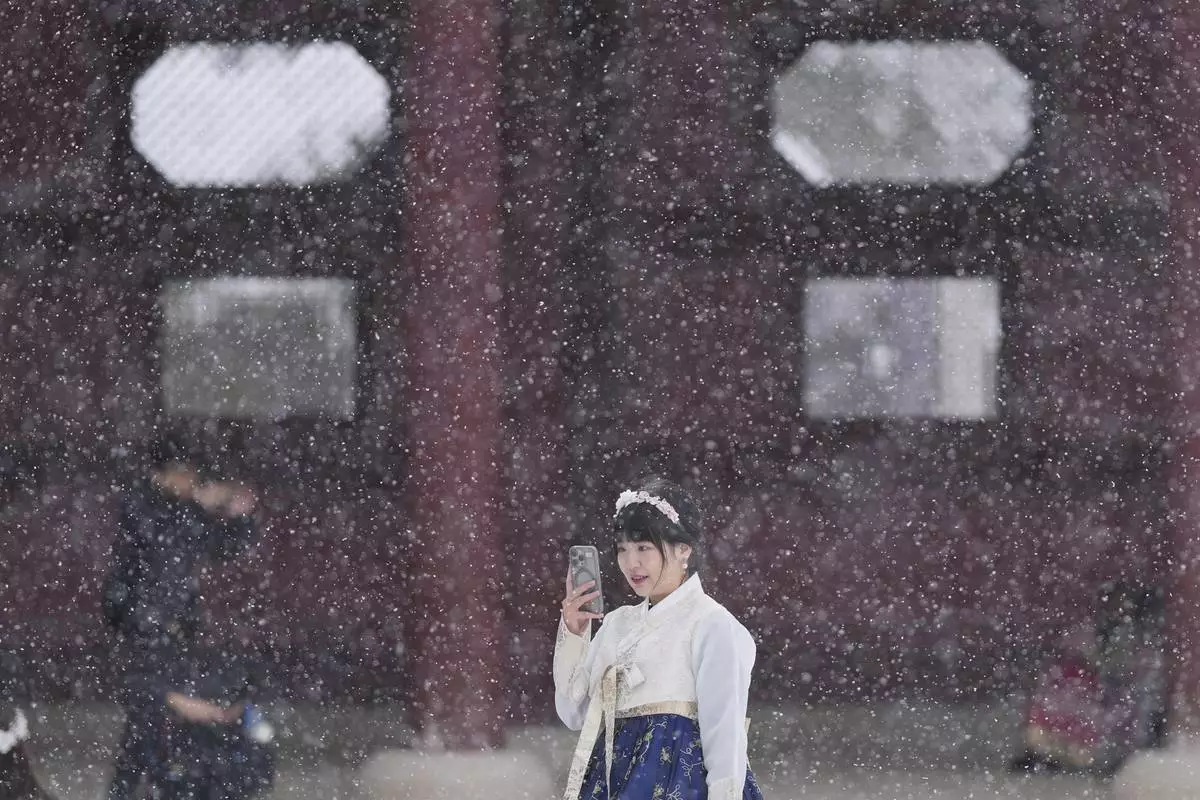
Chan Yian from Taiwan holds her smartphone in snow at the Gyeongbok Palace, one of South Korea's well-known landmarks, in Seoul, South Korea, Wednesday, Nov. 27, 2024. (AP Photo/Lee Jin-man)
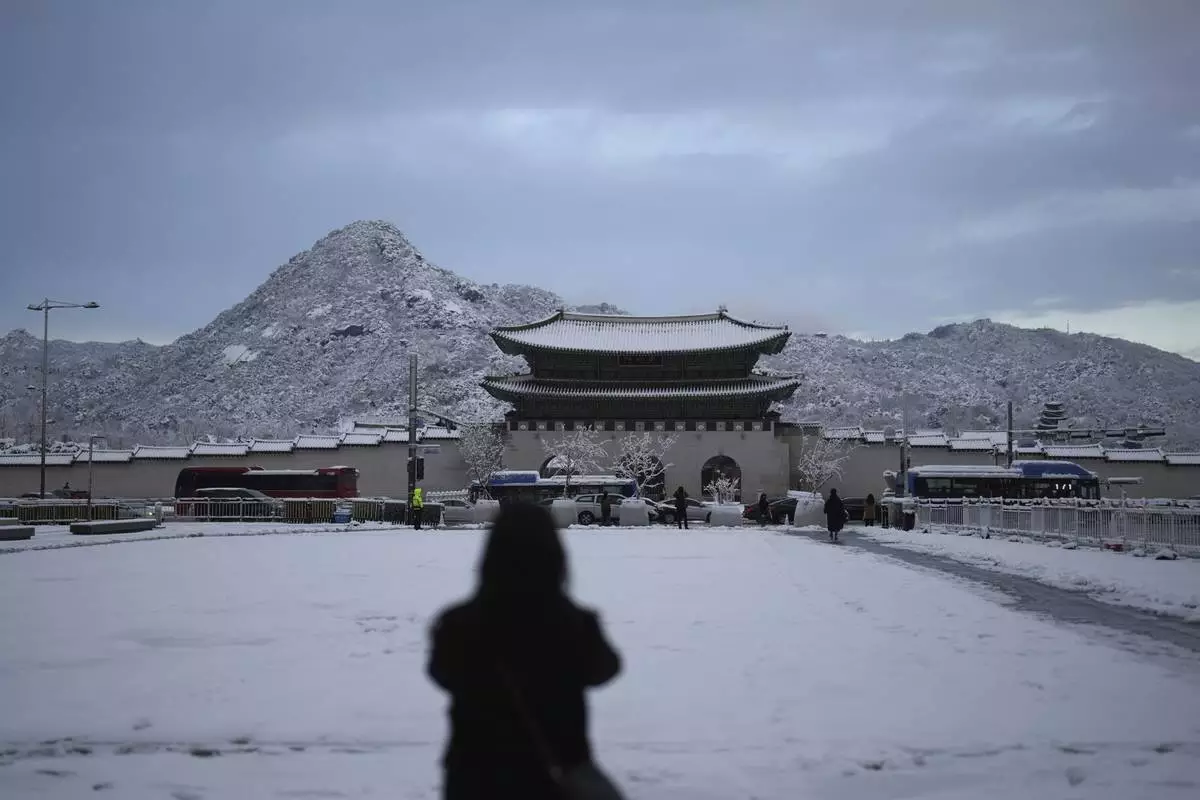
A pedestrian stops to take photo the snow-covered Gwanghwamun, the main gate of the 14th-century Gyeongbok Palace, one of South Korea's well known landmarks, in Seoul, South Korea, Wednesday, Nov. 27, 2024. (AP Photo/Lee Jin-man)

Chan Yian from Taiwan holds her smartphone in snow at the Gyeongbok Palace, one of South Korea's well-known landmarks, in Seoul, South Korea, Wednesday, Nov. 27, 2024. (AP Photo/Lee Jin-man)
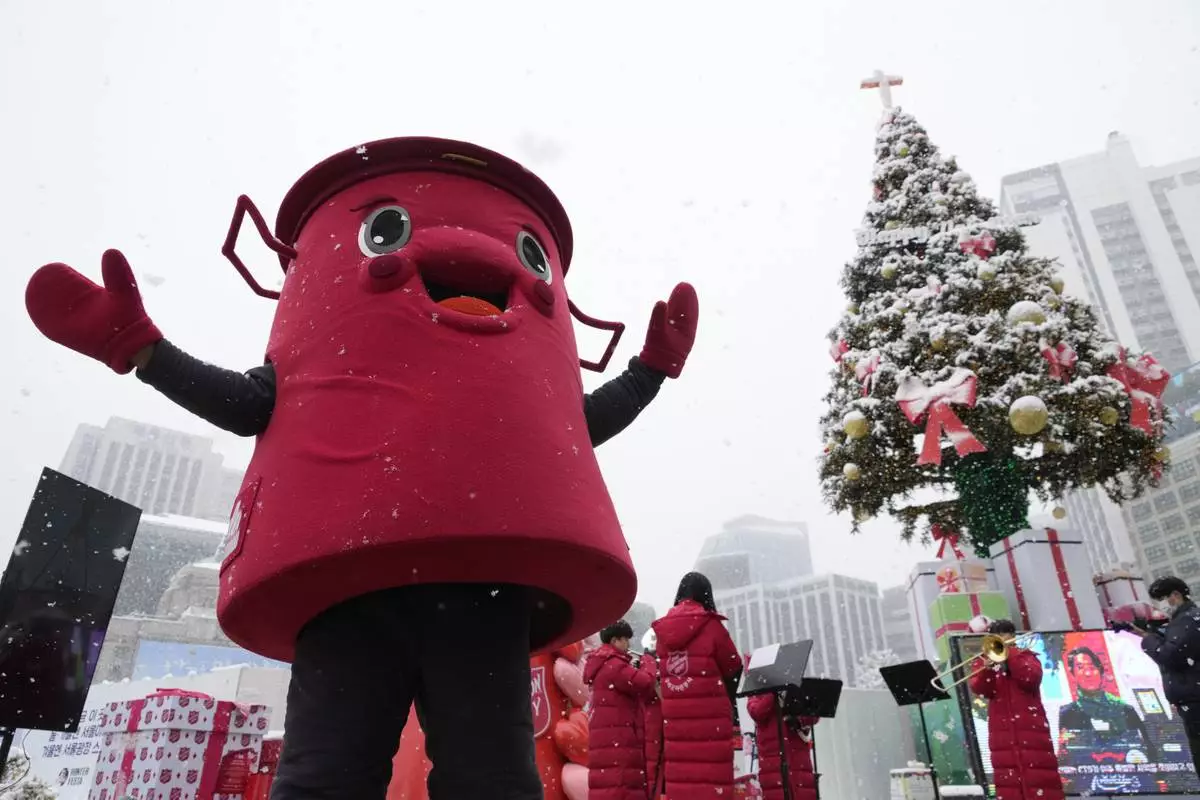
A volunteer man wearing a costume of a Salvation Army pot stands near a snow-covered Christmas tree in Seoul, South Korea, Wednesday, Nov. 27, 2024. (AP Photo/Ahn Young-joon)
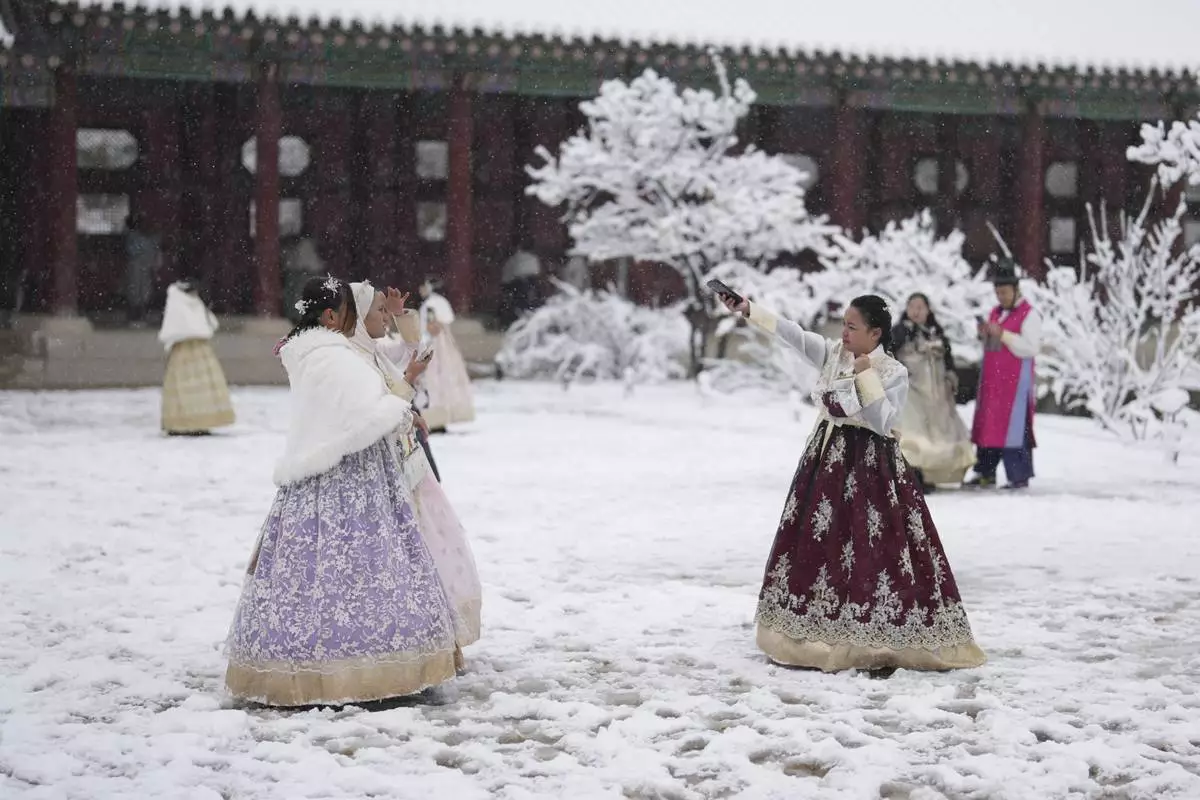
Mary Joy Morcisa from Philippines, right, gestures in snow at the Gyeongbok Palace, one of South Korea's well-known landmarks, in Seoul, South Korea, Wednesday, Nov. 27, 2024. (AP Photo/Lee Jin-man)
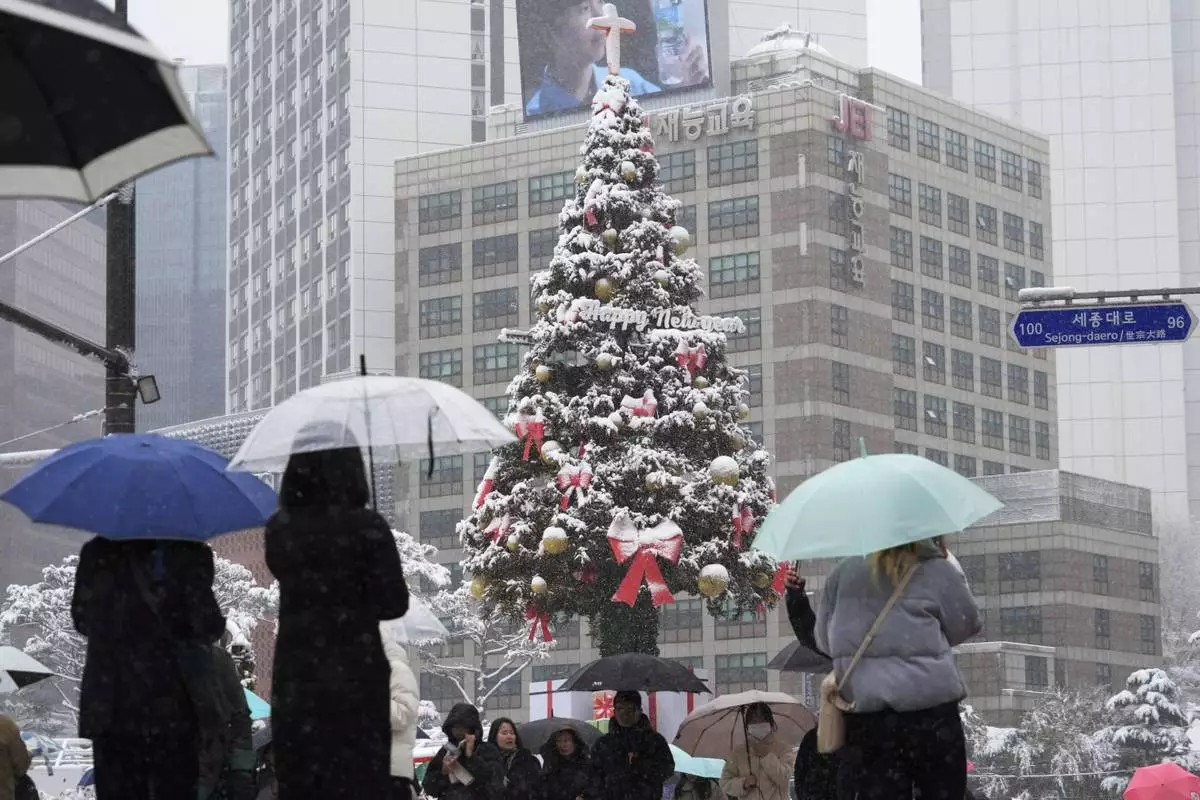
People pass by snow-covered a Christmas tree in Seoul, South Korea, Wednesday, Nov. 27, 2024. (AP Photo/Ahn Young-joon)
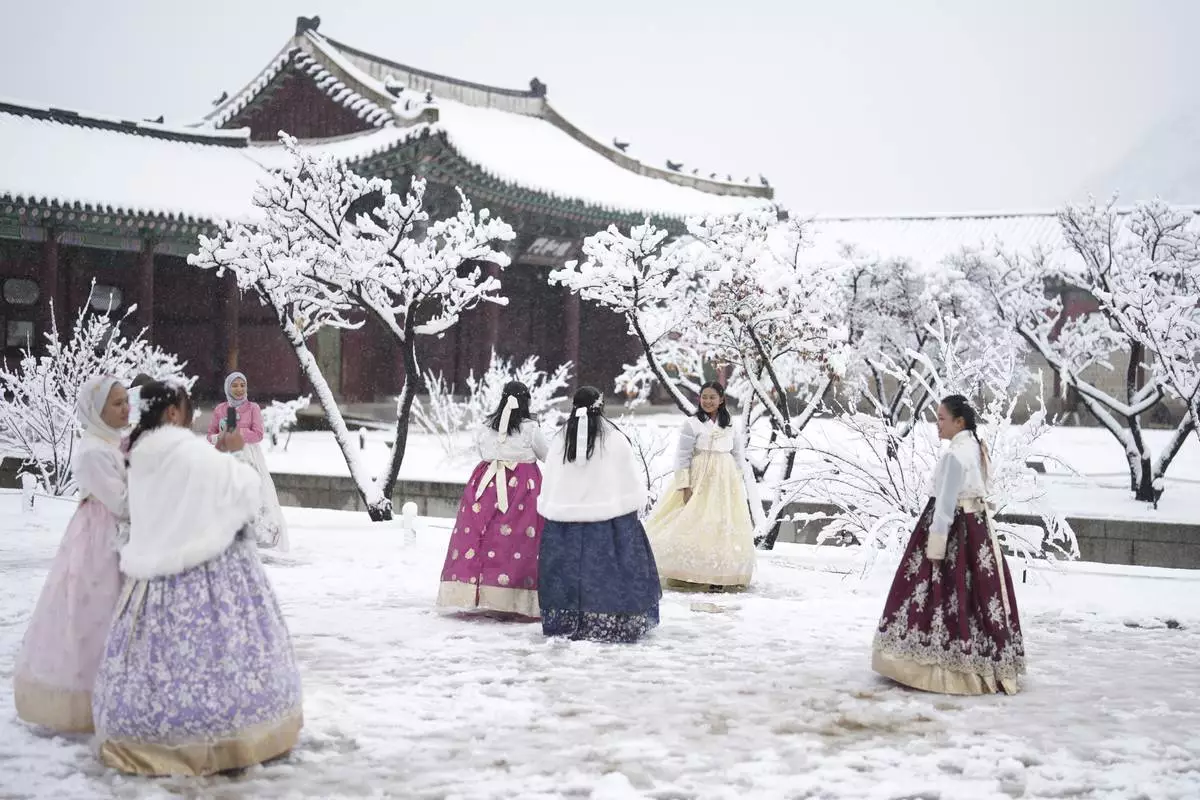
Visitors enjoy in snow at the Gyeongbok Palace, one of South Korea's well-known landmarks, in Seoul, South Korea, Wednesday, Nov. 27, 2024. (AP Photo/Lee Jin-man)
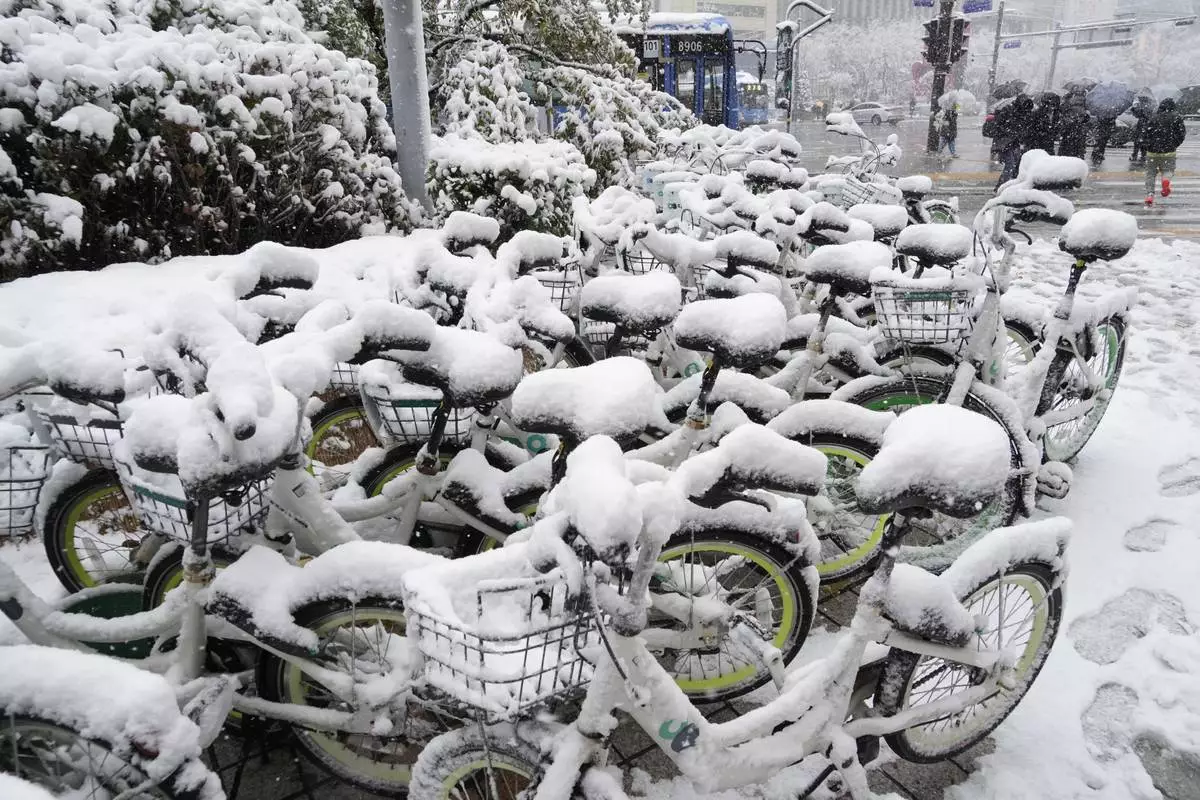
Snow-covered bicycles are parked near a subway station in Seoul, South Korea, Wednesday, Nov. 27, 2024. (AP Photo/Ahn Young-joon)
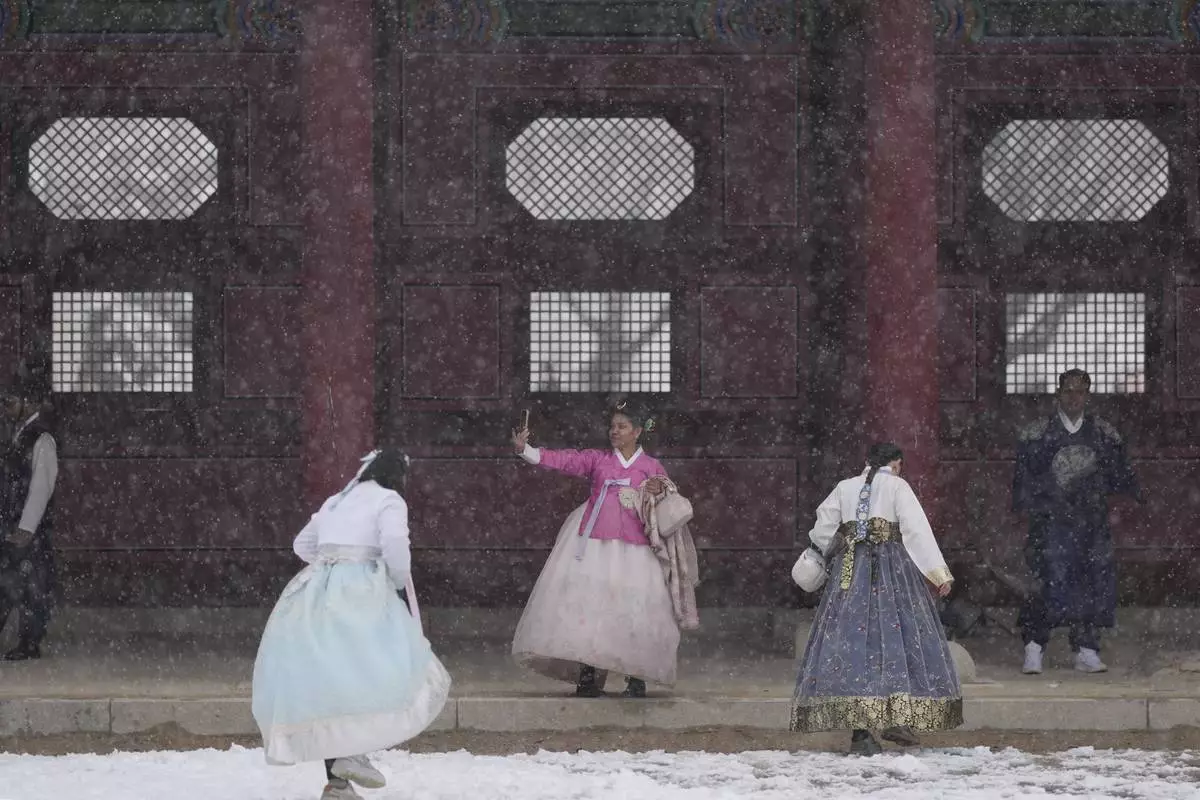
Visitors walk in snow at the Gyeongbok Palace, one of South Korea's well-known landmarks, in Seoul, South Korea, Wednesday, Nov. 27, 2024. (AP Photo/Lee Jin-man)

Gwanghwamun Square and Gyeongbok Palace are blanketed with snow in Seoul, South Korea, Wednesday, Nov. 27, 2024. (AP Photo/Ahn Young-joon)
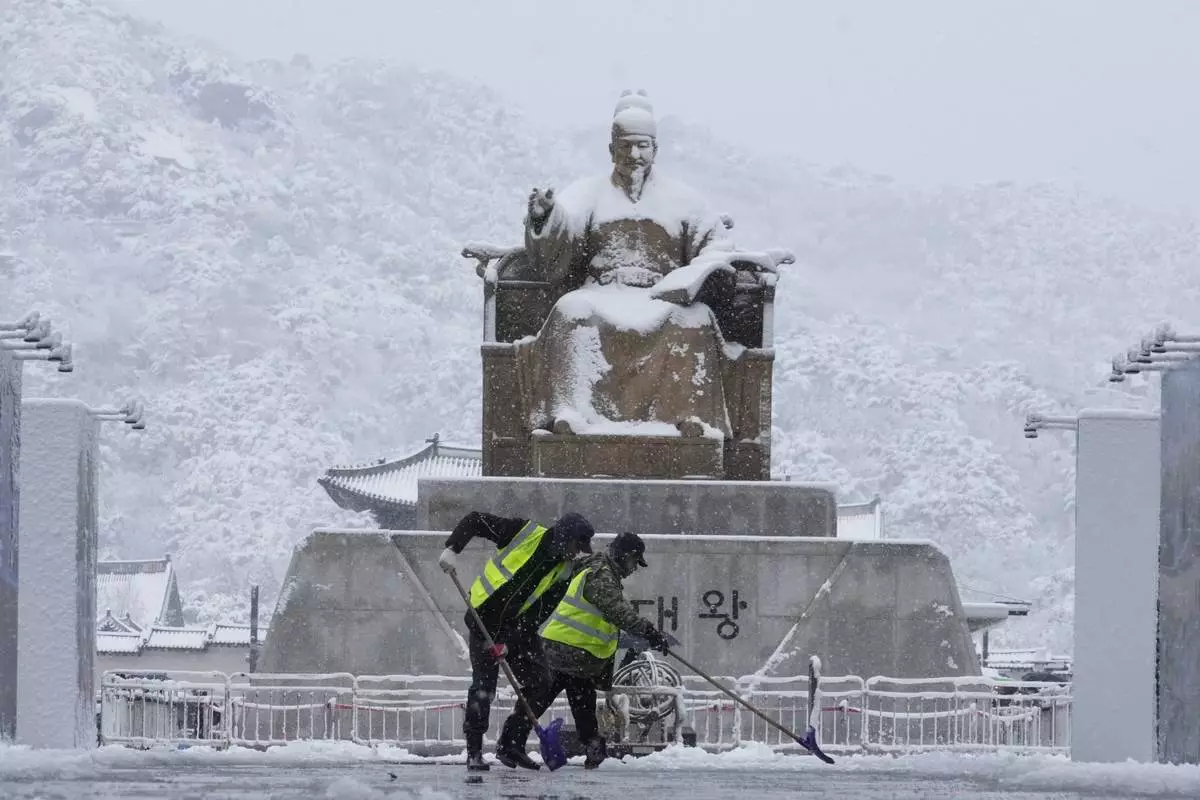
Workers clean snow in front of the statue of King Sejong at Gwanghwamun Square in Seoul, South Korea, Wednesday, Nov. 27, 2024. (AP Photo/Ahn Young-joon)
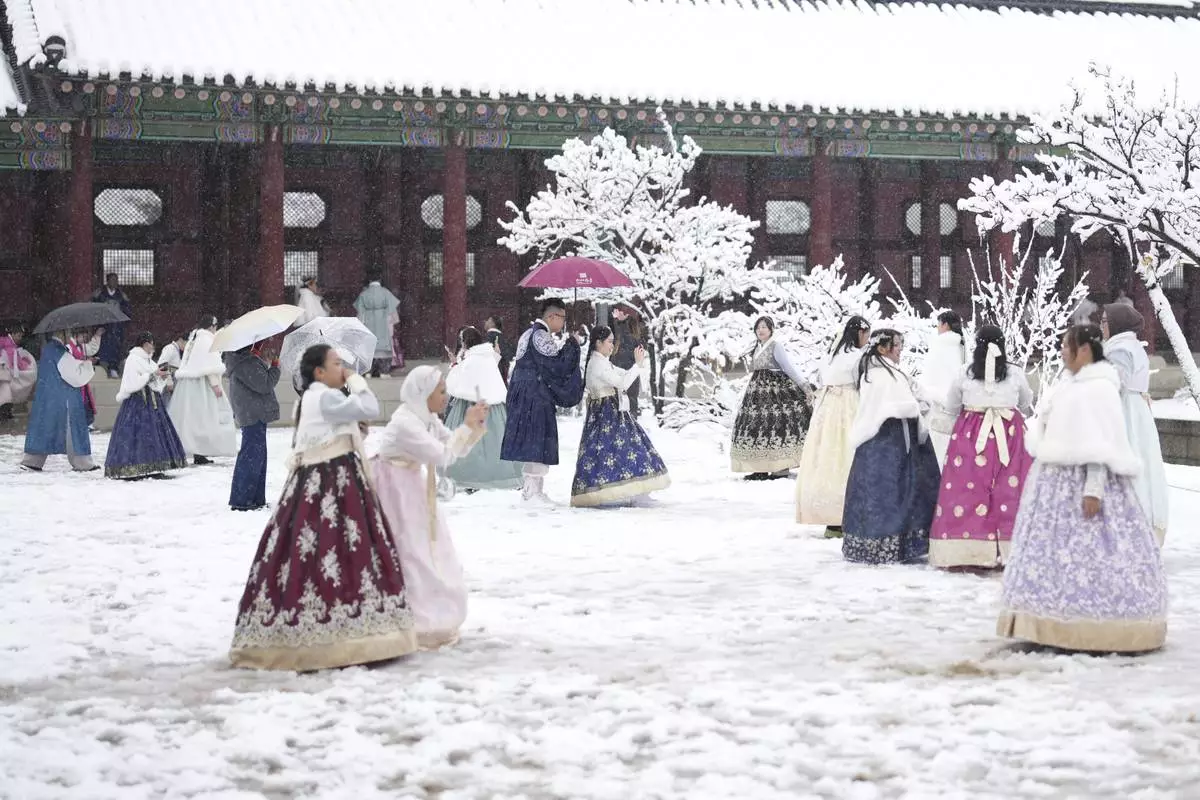
Visitors enjoy in snow at the Gyeongbok Palace, one of South Korea's well-known landmarks, in Seoul, South Korea, Wednesday, Nov. 27, 2024. (AP Photo/Lee Jin-man)





